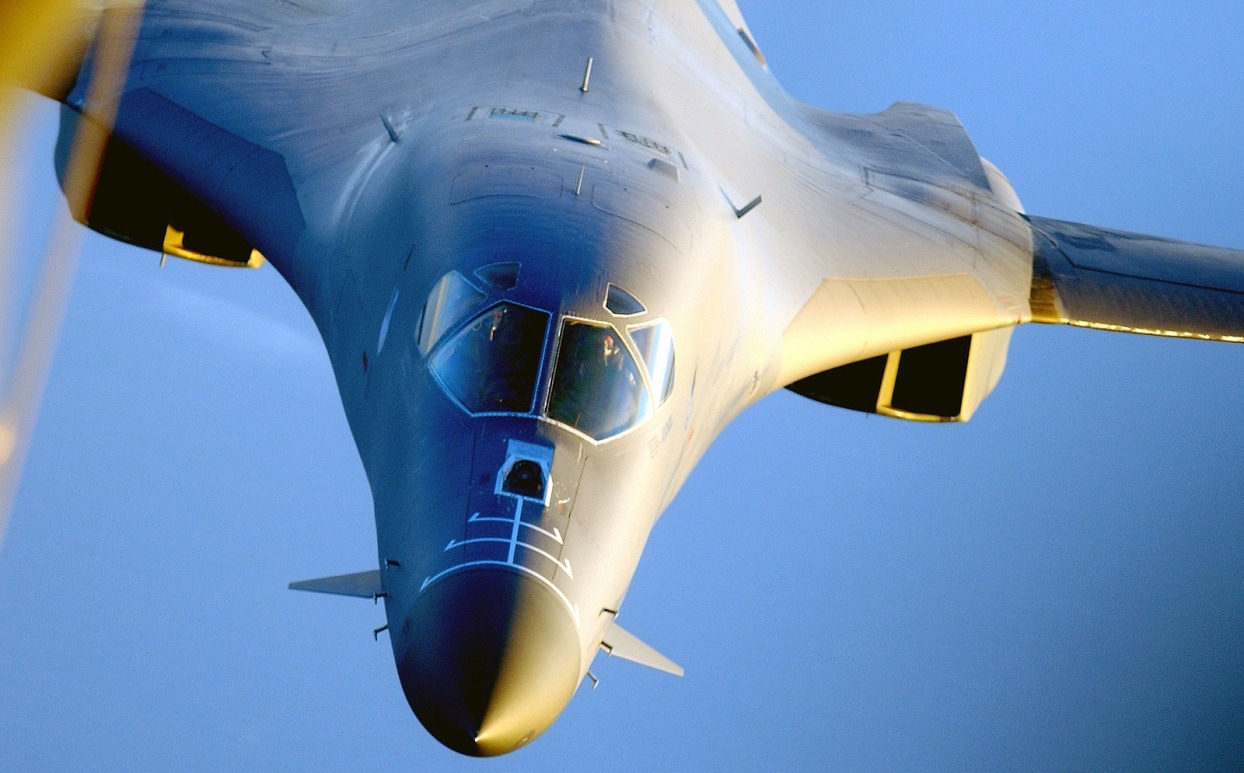Boeing Proposed Shifting Hypersonic Testing From B-52 to B-1B Bombers:
Earlier this year, the United States Air Force announced it wouldn’t pursue the hypersonic weapons program that was under development by aerospace and defense giant Lockheed Martin.
The AGM-183A Air-launched Rapid Response Weapon (ARRW) experienced a number of failures during testing, which involved a modified B-52 Stratofortress bomber.
The ARRW may be back on the proverbial shelf, but the Air Force will continue with its efforts to develop a viable hypersonic missile.
In addition to looking at other hypersonic initiatives, it was announced this month that Boeing has proposed shifting the testing of hypersonic missiles from the B-52 to the B-1 Lancer instead.
The aerospace firm further suggested that a new pylon could be employed, and as an added benefit, it would increase the B-1’s munition-carrying capacity by 50 percent with a plethora of existing weapons.
Load Up
Boeing developed internally what is dubbed the Load Adaptable Modular (LAM) pylon, and according to a report from Air & Space Forces magazine, the Air Force will use some congressional add-on funds to test the new platform.
Those tests have already begun.
The external pylon design is reportedly rated for payloads up to 7,500 pounds.
“The whole point of this … is for the B-1 to become the hypersonic testbed for the Air Force,” Jennifer Wong, Boeing’s director of bomber programs, told reporters at Tinker Air Force Base, Okla. “Because of all the modernization efforts on the B-52, we can actually not take away from what we’re doing on the B-52 today to have it test hypersonics. So we will be doing hypersonics testing on the B-1.”
Boeing is the prime contractor for the sustainment programs for both the B-52 and the B-1. The B-52 Stratofortress bomber fleet is receiving new engines, and as a result, those aircraft will be redesignated the B-52J. Those upgrades will allow the Cold War workhorse to remain flying well into the late 2040s or even early 2050s. By contrast, the Air Force currently plans to retire the last B-1B Lancers by 2036, with plans to transition units flying them to the now-in-development B-21 Raider.
B-52 Spread Thin
As Air & Space magazine also reported is that the Air Force has earmarked eight B-52s to test engines, radar, weapons, and other upgrades.
In addition, around a dozen are expected to be in depot, repair, or upgrade at any given time for the foreseeable future.
As a result, it leaves the service with just 56-58 of the current 76 B-52s ready for operations. The B-52 currently has a nuclear deterrence mission, whereas the B-1 does not.
This is a notable ship, as the Air Force had put such a great emphasis on the B-52 during its past hypersonic testing. However, this doesn’t mean that future tests won’t be carried out on the Stratofortress, as Wong suggested that the Air Force is “not going there, just yet.”
That could leave the door open for future underwing pylons testing for hypersonic weapons to be conducted with the B-52.
Turning the B-1 into a Bomb Truck
Boeing also views the LAM pylon as providing greater capability to the B-1s still in service.
The pylons can attach to the B-1’s external hardpoints, which were initially designed to allow the carriage of additional nuclear-armed air-launched cruise missiles.
However, the hardpoints fell into disuse at the end of the Cold War as the Air Force removed the nuclear weapons capabilities from the B-1s as part of the nuclear arms START treaty.
The hardpoints can be employed again as Russia has withdrawn from the New START treaty.
The LAM was designed to be rapidly reconfigurable, allowing a bomber to carry a variety of different new and existing weapons. Wong described the attachment lugs as clicking “into a new position… like LEGO,” a reference to the plastic building toys. The LAM offers adjustable mounts and attach points that can be changed on the flight line to shift from one weapon to another.
The B-1 could mount six of the LAM pylons, thus turning the B-1 into a true bomb truck for hypersonic weapons and much more.
Author Experience and Expertise
A Senior Editor for 19FortyFive, Peter Suciu is a Michigan-based writer. He has contributed to more than four dozen magazines, newspapers, and websites with over 3,200 published pieces over a twenty-year career in journalism. He regularly writes about military hardware, firearms history, cybersecurity, politics, and international affairs. Peter is also a Contributing Writer for Forbes and Clearance Jobs. You can follow him on Twitter: @PeterSuciu.

